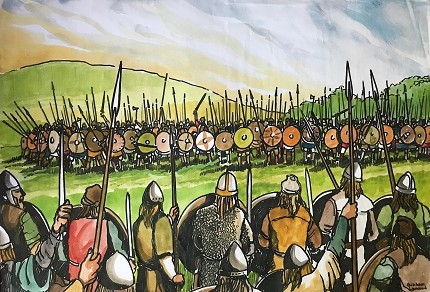
The Battle of Assandun (sometimes spelt ‘Assandune’) in 1016 was the most significant event of the Anglo-Saxon period in the Rochford District.
The battle was fought in the Essex countryside on 18 October 1016 between the armies of Edmund Ironside, King of England, and Cnut (usually rendered as ‘Canute’ in English), whose father was King of Denmark. Although the location is disputed, because the surviving source material is vague and the archaeological evidence sketchy, it is widely believed that ‘Assandun’ equates to Ashingdon. The stakes of the battle were high, as the victor would be King of England.
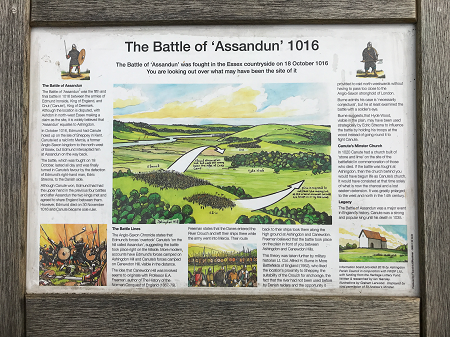
Research by Professor E.A. Freeman in the 19thcentury and Lt. Col. Alfred H. Burne in the 20thsuggests that Edmund’s forces were camped on Ashingdon Hill and Canute’s forces were camped on Canewdon Hill. One of Edmund’s counsellors, Eadric or Edric, was a noted turncoat, whose defection to Canute’s side during the battle led to the Vikings becoming victorious and Canute becoming King. Burne suggests that Hyde Wood, which lies in the plain between the two settlements, may have been used strategically by Eadric to influence the outcome of the battle by holding his troops at the wood instead of going round it to meet up with the rest of Edmund’s men.
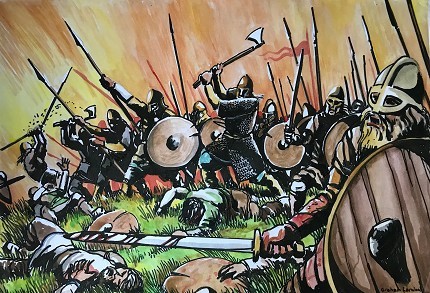
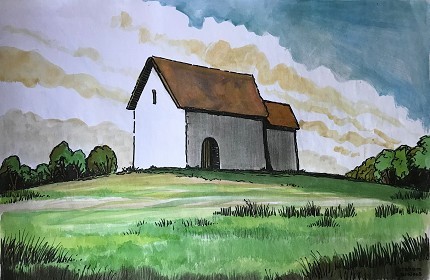
In 1020 Canute had a Christian chapel of "stone and lime" built at the battle site to commemorate the fallen. Canute appoints his personal chaplain, Stigand, as its first priest.
Stigand went on to become a significant figure in history, serving as an advisor to Canute’s widow, Emma, to Canute’s sons and successors, Kings Harold Harefoot and Harthacanute, and to their successor, King Edward the Confessor. He may also have been advisor to the next King, Harold Godwinson.
Ecclesiastically, he became Bishop of Elmham, Bishop of Winchester and Archbishop of Canterbury. He had something of a chequered career, however, being accused of extortion and being excommunicated for not visiting the Pope initially and then by subsequent Popes for holding the Winchester and Canterbury bishoprics simultaneously (only one such living at a time was permitted).
Why not pay a visit to St. Andrews Minster and see if you can identify which part formed the original 1020 church? Check your answer at the information board outside at the far end of the church.
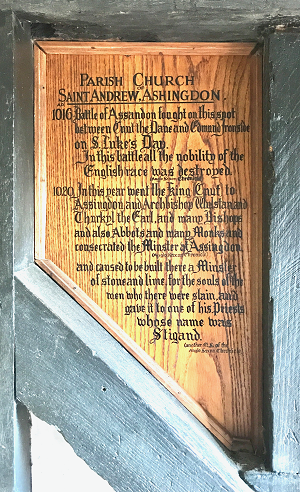
A disgruntled, ex-communicated Stigand witnesses the coronations of Kings Harold and William the Conquerer in 1066 by the legitimate Archbishop of Canterbury, Ealdred. Although Stigand was now Archbishop of Canterbury, he could not officiate at either coronation as he had been excommunicated and Kings needed an 'approved coronation'.
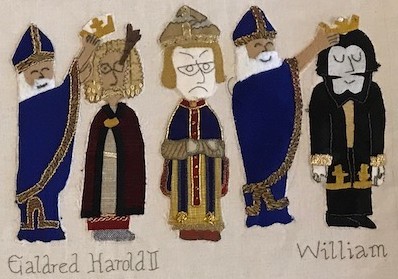
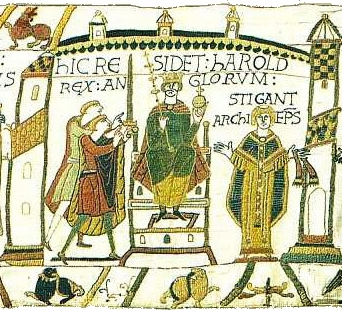
Stigand appears on the Bayeux Tapestry, which was commissioned by William’s half-brother, Odo, Bishop of Bayeux. Bishop Odo held land in Barling, Beckney (once part of Ashingdon and Hockley), Stambridge and numerous areas across Britain.